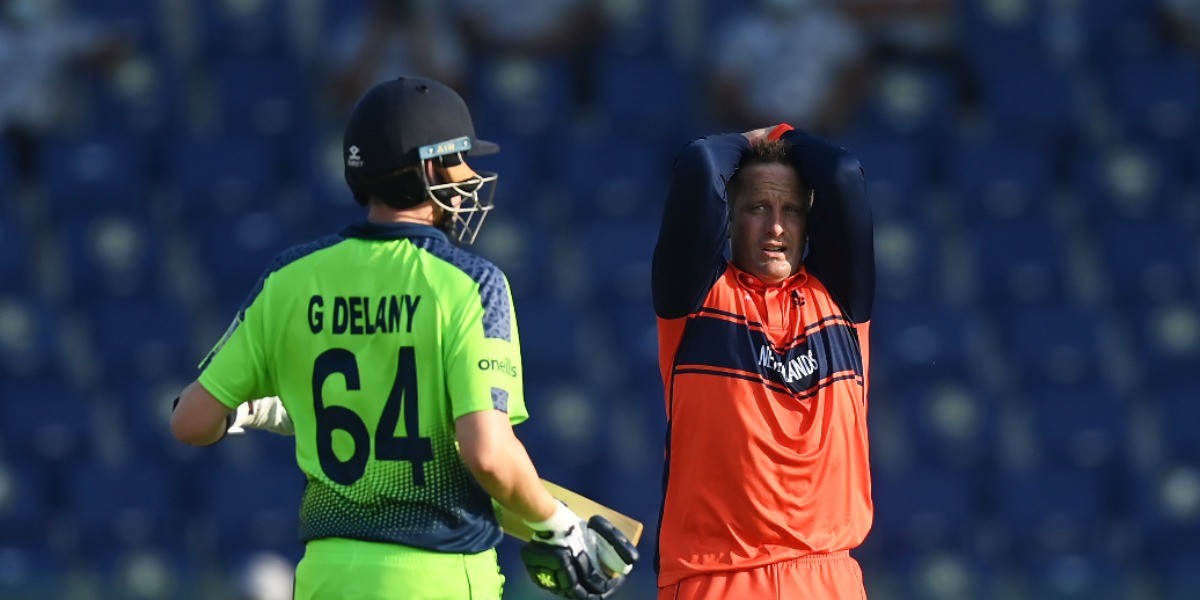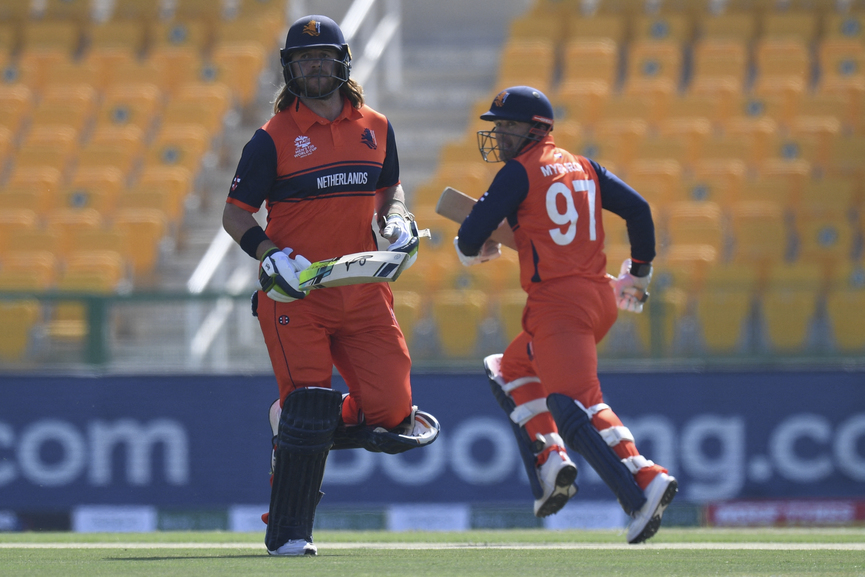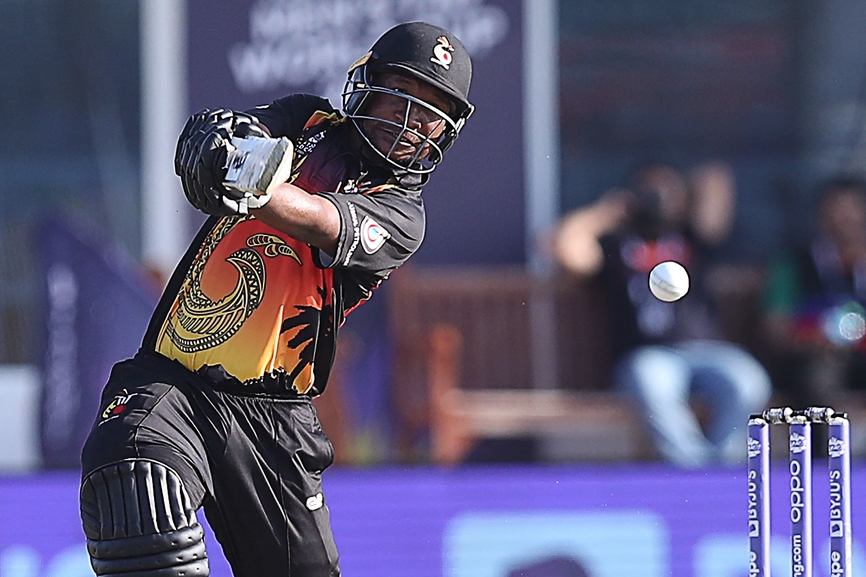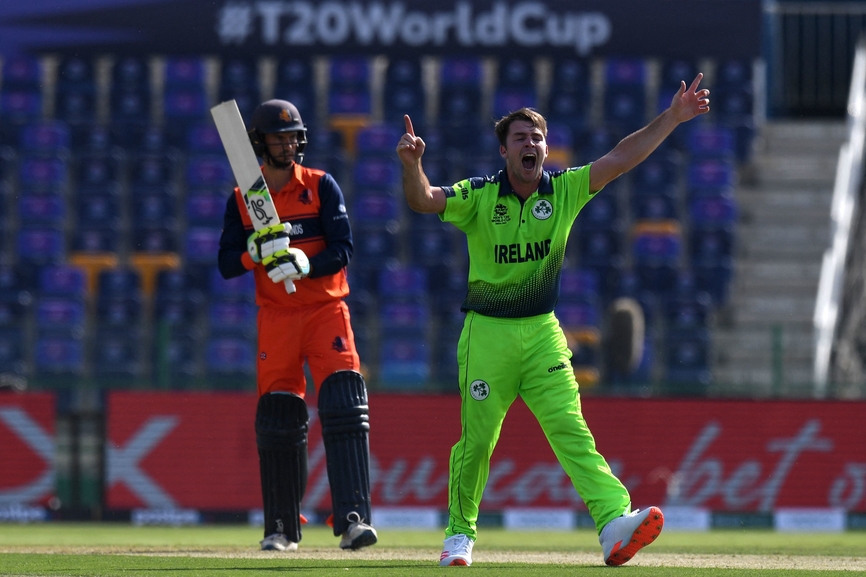 OPINION
OPINIONThe Netherlands, Oman, Papua New Guinea (PNG) and Ireland went into the T20 World Cup at the back of some impressive performances, but in the end, they could not go through to the Super 12s despite putting in their best efforts.
Here’s a look at how they fared in the tournament:
The Netherlands
For years, the Netherlands have had the pedigree of making it to major tournaments consistently and have always gone toe-to-toe with some of the big teams. They beat England twice in a World T20 and Ireland twice before this edition of the T20 World Cup.
Having won the Qualifiers in 2019, the Netherlands also won the World Cricket League (WCL), which has now put them in the ODI World Cup Super League, where they will compete against full members on a regular basis in a bid to gain qualification for the 2023 50-over World Cup in India.
They started off with a series win over Ireland at home, which was the first cricket series to be telecast live in the Netherlands. A tour of South Africa and England are also in the pipeline.
With things finally looking up for the Dutch, one expected them to come out all guns blazing in the T20 World Cup. However, what transpired was a disappointing string of results that saw them crash out of the tournament without a single win.
What went wrong?
As head coach Ryan Campbell told Cricket.com ahead of the tournament, the Netherlands had not played a single T20 International (T20I) since April this year. In fact, Netherlands’ tour of Nepal was the only series they played since winning the Qualifiers in 2019 before playing their first match of the T20 World Cup in 2021. Moreover, Netherlands did not have many first-choice players at their disposal for that tour.
Lack of game time meant, Campbell also did not know what the best Netherlands XI would be for the mega event, which was quite evident. The Dutch started off with fast bowler Brandon Glover for their first match against Ireland with the likes of Paul Van Meekeren and Tim van der Gugten sitting on the bench – two of whom are far more experienced at the international stage.
After a thrashing at the hands of the Irish, while Campbell rectified one of his errors – getting Timm van der Gugten in for Glover, he decided to drop Ben Cooper – Netherlands’ leading run-getter in T20Is for the next game. His replacement Stephan Myburgh, who was one of their standout performers in the 2014 edition did very little to justify his place in the next two games.
No show from senior players
The likes of Roelof Van der Merwe, Ryan ten Doeschate, Pieter Seelaar and other senior members of this Dutch side did not step up to the plate and deliver at the big stage. Van der Merwe scored just six runs in three innings and failed to strike even once, while ten Doeschate did not even open his account in the tournament.
 Seelaar’s captaincy also come under scrutiny especially in the match against Namibia, when he chose part-timer Bas de Leede to bowl ahead of him when he himself had two overs up his sleeve having given away just eight runs in his previous two, which also included a wicket. That was a turning point in the match as Namibia cruised home after that.
Seelaar’s captaincy also come under scrutiny especially in the match against Namibia, when he chose part-timer Bas de Leede to bowl ahead of him when he himself had two overs up his sleeve having given away just eight runs in his previous two, which also included a wicket. That was a turning point in the match as Namibia cruised home after that.
Any positives?
Max O’Dowd is held in high regards within the Netherlands team and their coach Campbell is of the belief that he would fit into any franchise T20 league team in the world. He justified the faith shown by his coach, by slamming two fifties in three innings in the T20 World Cup and finished with 123 runs at 41 to go with a strike-rate of 116.03.
 Fred Klaassen had a terrific T20 Blast for Kent and he showed his prowess once again in an orange shirt. While he may have pocketed just a couple of wickets in the tournament, he showed his full range of deliveries against Namibia, in which he picked up 1 for 14 to initially put his team in control. However, it wasn’t to be his tournament, but there’s little doubt he will continue to lead Netherlands’ pace attack for years to come.
Fred Klaassen had a terrific T20 Blast for Kent and he showed his prowess once again in an orange shirt. While he may have pocketed just a couple of wickets in the tournament, he showed his full range of deliveries against Namibia, in which he picked up 1 for 14 to initially put his team in control. However, it wasn’t to be his tournament, but there’s little doubt he will continue to lead Netherlands’ pace attack for years to come.
Papua New Guinea
For the last 6-7 months ahead of the T20 World Cup, PNG have been under new coaching staff with former Italy international Carl Sandri taking over the reins from Joe Dawes. Dawes played an instrumental role in getting PNG into their first-ever T20 World Cup and his first few months in charge of the Barramundis has not been an easy one for the new coach.
Since their runners-up finish in the 2019 T20 World Cup Qualifiers, PNG had not played a single T20I ahead of the mega event, barring a couple of practice matches – against Sri Lanka and Ireland – a few days ahead of the World Cup.
PNG also played as many as eight One-Day International (ODI) matches ahead of the T20 World Cup, a few of them as part of the ICC Cricket World Cup League 2 matches, losing all of them. Safe to say, it wasn’t ideal preparation, but something that Sandri insisted is not a cause for concern in a chat with us ahead of the World Cup.
What went wrong for the Barramundis?
It’s often believed that the first or the first couple of overs of the tournament sets the pace for the remainder and that was exactly the case for PNG, who in their first match against Oman were 0 for 2 in the first nine balls. They never recovered from that – not just in the match – but for the rest of the tournament.
Barring a few glimpses, PNG never really pulled together as a team. Skipper Assad Vala scored a vital fifty against Oman, while Norman Vanua and Kiplin Doriga gave Scotland a scare in pursuit of 166 after Kabua Morea picked up four wickets in the same match. While there were many bright individual shows, collectively PNG seemed like a disoriented unit.
 A lot was expected of Charles Amini in the tournament, given his prowess to clear any boundary in the world with ease and his ability to trouble the batsmen with his leg-spin. He was also one of our players to watch out for this tournament. He did hit the first six of the tournament and also took a couple of excellent catches, but overall, he managed just 39 runs from three innings and did not pick up a single wicket in his 8.4 overs in the tournament.
A lot was expected of Charles Amini in the tournament, given his prowess to clear any boundary in the world with ease and his ability to trouble the batsmen with his leg-spin. He was also one of our players to watch out for this tournament. He did hit the first six of the tournament and also took a couple of excellent catches, but overall, he managed just 39 runs from three innings and did not pick up a single wicket in his 8.4 overs in the tournament.
The fact that PNG’s leading wicket-taker in T20Is Norman Vanua could bowl only six overs in the tournament due to a shoulder niggle was a huge blow for the side, but he showed his prowess with the bat against Scotland, scoring 47 batting down the order which gave his side a glimmer of hope.
Any positives?
The fact that PNG qualified for their first-ever World Cup is in itself a huge plus for a country where rugby is the most liked sport. This will certainly give the Barras the motivation they need to ensure they come back stronger in the next edition if they once again manage to qualify. They now have an idea of what it takes to win matches at a global competition and under a relatively new backroom staff, they will hope to put things right and make a fight of it in 2022.
If they need any sort of inspiration, they can always go back to the match against Kenya in the Qualifiers where they were reduced to 19 for 6 at one stage and bounced back to win the match by 45 runs.
What lies ahead?
They will now play the qualifiers for the 2022 T20 World Cup, which will be hosted by UAE and Oman, starting November 2021. They are not completely out of contention for the 2023 50-over World Cup as well, despite being at the bottom of the table and could very well make a fight out of it to make it to the 10-team event in India.
Oman
Ahead of the T20 World Cup, Oman coach Duleep Mendis in a chat with Cricket.com said that he is 100% sure that his side would make it through to the Super 12s, just as he was sure Sri Lanka would lift the 1996 World Cup when he was the team manager. Mendis was right about the latter, but when it comes to Oman, he was proved wrong.
However, that does not take away from the fact that he has turned the fortunes of the Oman cricket team around during his decade-long stay. The Asian side were playing in Division five when Mendis took over and have ever since, played in two T20 World Cups – co-hosting one of them, gained ODI status and are now one of the strong contenders to make it to the 2023 50-over World Cup.
"When I told my friends in Sri Lanka that I am going to Oman for cricket some asked if they play cricket. It gives me great pleasure when I look back at where we were and where we are now. I enjoy my role as the board of directors are so much in favour of cricket. They are very passionate,” Mendis told Cricket.com’s show ‘Know Your Associates.’
Oman’s rise in international cricket over the last 10 years has been nothing short of remarkable.
 It started well for them, having beaten PNG comprehensively by 10 wickets. They put up a good fight against Bangladesh, but in their next must-win game against Scotland, they were overpowered, thereby, bringing an end to their campaign. Like PNG, it would have been a learning curve for Oman as well and they will do all it takes to make it to the mega event in Australia next year.
It started well for them, having beaten PNG comprehensively by 10 wickets. They put up a good fight against Bangladesh, but in their next must-win game against Scotland, they were overpowered, thereby, bringing an end to their campaign. Like PNG, it would have been a learning curve for Oman as well and they will do all it takes to make it to the mega event in Australia next year.
What went wrong?
It could all boil down to the inexperience of playing in big tournaments. At critical junctures in the game, it becomes important to hold your nerve, keep a calm and be collected, which is a lesson Oman could take from this tournament.
Against Bangladesh, Oman pulled things back extremely well with the ball to restrict the Tigers to just 153, from 120 for 5 at the end of 15 overs. However, they could not absorb the pressure with the bat. Despite being 81 for 2 in the 12th over, Oman failed to make a match of it and could add a further 46 runs more in the remaining overs.
While Bangladesh’s bowling was good, Oman’s lack of experience at this level was exposed as there seemed to be no planning or a plan B for that matter for when things got tough.
They did not lack any sort of preparation. They played warm-up matches against Mumbai, followed by matches against the Netherlands and Namibia. Not to forget, they were in excellent form in the ICC Cricket World Cup League 2 going into the tournament, winning five out of the eight ODIs.
What lies ahead?
Oman currently sit top of the ICC Cricket World Cup League 2 with 27 points from 18 matches, 11 clear of the closest rivals Scotland. This puts Oman in a great position to make it directly to the World Cup Qualifier in 2023 in Zimbabwe and gives them a chance to be a part of the ODI Super League in 2023.
However, they will first have to fight it out for a place in the next T20 World Cup, starting next month with Oman once again being co-hosts.
Ireland
Ireland are the only Test-playing nation that are not part of the Super 12 stage. They got off to an excellent start in their first game when they thrashed the Netherlands by seven wickets, riding on a dream spell from Curtis Campher, in which he picked up four wickets in as many deliveries. However, that’s as good as things got for them as they were crushed by Sri Lanka by 70 runs, followed by yet another comprehensive eight-wicket loss against Namibia in a do-or-die clash.
Ireland finished third in the T20 World Cup Qualifiers in 2019 and by the looks of it will once again have to play in the Qualifiers next month, given that they are ranked 13th currently, below Zimbabwe and Scotland. The top 10 ranked teams automatically make it to the T20 World Cup with the team ranked ninth and 10th playing in round one, while the remaining have to play the Qualifiers.
Ireland will play the Qualifiers as one of the four teams that did not make it through to the Super 12 stage of the 2021 edition.
What worked?
It was their bowlers who had more often than not set up matches or kept them in the game. Collectively, they were among the most economical teams in the first round, conceding at just 6.9 runs an over. They picked up a wicket every 18.5 deliveries, 21.2 runs apart, which are once again decent numbers.
 They bowled the Netherlands out for 106 and then had Sri Lanka reeling at 8 for 3 in the first 10 balls of the match before Wanindu Hasaranga and Pathum Nissanka rebuilt the innings. Even in the crucial match against Namibia, their bowlers kept the pressure on after their batsmen managed just 125.
They bowled the Netherlands out for 106 and then had Sri Lanka reeling at 8 for 3 in the first 10 balls of the match before Wanindu Hasaranga and Pathum Nissanka rebuilt the innings. Even in the crucial match against Namibia, their bowlers kept the pressure on after their batsmen managed just 125.
What didn’t work?
Dependence on just a few bowlers certainly backfired. Curtis Campher (6), Joshua Little (5) and Mark Adair (5), picked up 16 wickets between them while the rest of the team just chipped in with one wicket and inflicted two run-outs. Craig Young, Simi Singh and Benjamin White bowled 21.3 wicketless overs between them, which certainly did not help Ireland’s cause.
The Irish batsmen were not too great either. They scored at a run-rate of just 6.2, which was the lowest among all the teams in the tournament and lost wickets every 15.3 balls, 15.9 runs apart, which is also among the worst.
While they had the best run-rate in the powerplays (7.4), thanks to some powerful hitting from Paul Stirling and Kevin O’Brien, they slumped to rock bottom in the next two phases scoring at 5.9 and 4.6 runs per over respectively.
With the talented of players that Ireland possess, not making it to the Super 12s is nothing short of failure for them, but one can certainly count on them to turn things around going forward.